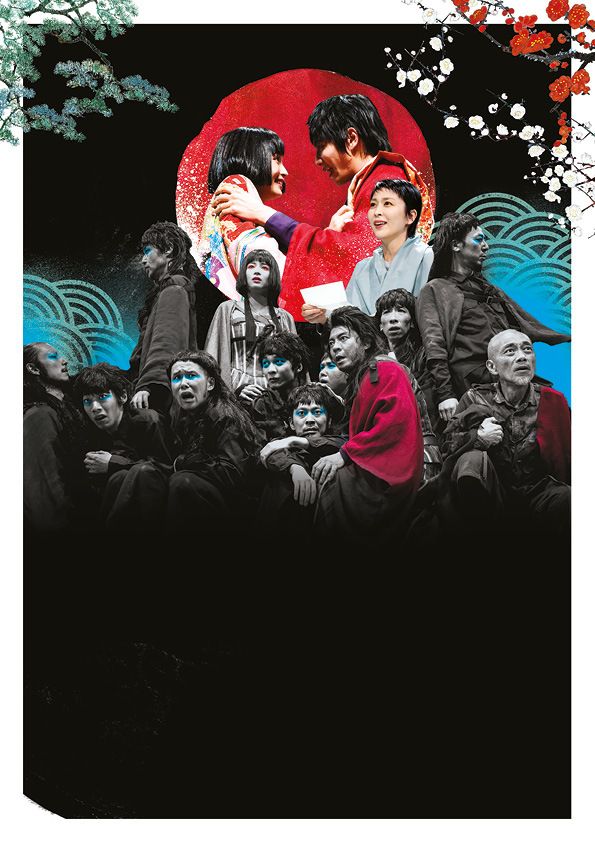Sadlers Wells
Calling oneself a British enthusiast nowadays has lost a lot of its glitz and glamour. Xenophobia, the grit in our country’s Vaseline along with grinding austerity has diminished that star. Yet Hideki Noda proclaims it to the world (or those lucky enough to be gifted with a program) as his 2019 show gets its UK premiere at Sadlers Wells. For three nights and three nights only, and with intensity this high, it might be for the best.
Japan and England have maintained an odd connection, linked by reciprocal cultural obsession, similarities in social manners, climate, and apparently Freddie Mercury’s love (who knew?). In the 90s the London theatre scene gained a powerful new ally from the land of the rising sun as Noda continued his theatre studies here. Since then, he has risen to prominence on both sides of the globe, his hit show at the Soho Theatre (Bee) in 2015 premiered to much pomp and acclaim.
But can a much bigger beast still wow the British theatre-going public? Bringing together Queen’s epic album A Night at the Opera, traditional Japanese Kabuki, AND Shakespeare’s Romeo and Juliet together under one roof is a herculean task. One that Noda runs towards, kimono sleeves metaphorically (and literally) bellowing.
But what does all this look like? Aside with metaphor! Let’s get down to brass tacks. Yukio Horio’s set is like a bleached Mayan ball court (ulama) in miniature. Two wings and a long rectangle two-story structure, fitted with double-size revolving doors sits squat centre stage. Climbing-wall-holds look like carved skulls and allow the performers to leap onto the higher level with surprising speed and grace. The wings are pushed back for a change of space and that’s it, folks. Classic, simple, flexible, and beautiful, could it be more Japanese?
Within the courtyard rages the battle between the monk-like spiritual Minamoto clan and the hedonistic Taira Clan. The blues and reds respectively of the warring families are shown in Kodue Hibino’s sleek costumes. Think 12th century Japan yet filtered through the lens of both the famous fashion designer Kenzō Takada and the late great Issey Miyake. We have all the swaying silk of The Tale of Genji with stylish black trainers, and ironic clown makeup with modern plastic harnesses. Coupled with the intensity of acting style, all in Japanese, with the kabuki melodrama and speed, the effect is something, quite the feast.
Noda still has an exception grip on the rules of both Western and Eastern theatre making, and moments jump out with jolting beauty. Messages soar up in the air written on paper planes mounted on sticks, a repeated motif and a delicate way to show the fragility of communication. Also, humour, a notoriously tricky beast when conveyed in a foreign tongue, and then read through opera screens bounds around the piece. A gifted comedic cast and some knowingly self-aware writing (thanks to Noda as well) give us flashes of modern life bursting through the age-old tale.
Satoshi Hashimoto is the ringleader in comic timing and slapstick physical gags. Playing the unlucky monk constantly failing to help, along with various leaders of the Minamoto clan he stands far and away as the funniest on stage. Suzu Hirose as young Juliet is every inch the classic heroine, all youthful exuberance and lily-like fragility. Hideki Noda himself as the nurse in drag is a comedic thread that runs throughout the play as he pelts on and off stage screaming like a dying crow. Jun Shison (the brand ambassador for Gucci don’t you know?) as young Romeo has a serious (rather tiring) aura of our hero down. Natoto Takenaku leads the charge in terrifying joker-like face paint as the head of the Taira clan.
Everything blends (or at least tries to) as a cultural orgy of emotion, laughs, and operatic stakes, and in some senses, it works. In others not so much. Junko Fujimoto’s sound design means that Queen’s music that at points underpins the action but rarely informs it is snuffed out in favour of the lines. Making us question the legitimacy of the connection. Despite a strong first act, like a raging river taking your breath away, the chaos loses momentum by the second; descending into an overly complex plot like an estuary slowed down and silted.
Although staging what happens after Shakespeare’s play isn’t unique (see & Juliet) having both the old and new Juliet and Romeo battling over the narrative is. Similarly, the Kabuki recontextualisation isn’t unique either (see Hamlet staged at the Tokyo Globe) but this production’s scale certainly is. Disappointingly Noda’s talent and charm have been stretched beyond their limits with this piece. An evening rejoicing in the blending of cultural concepts feels more clash than consummation in the case.
Don’t miss what other wonders are on at Sadlers Wells!



